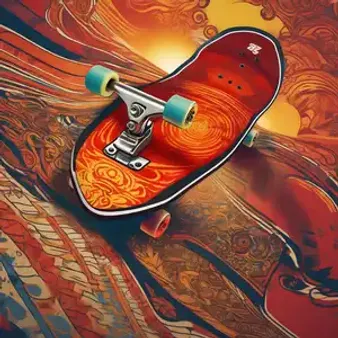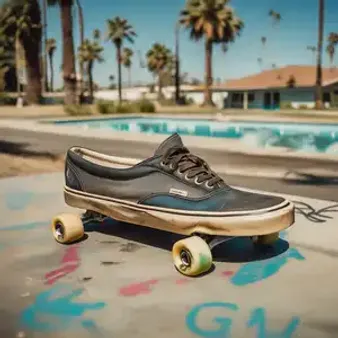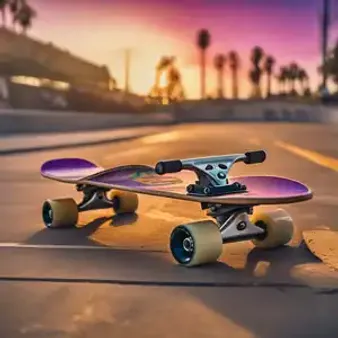Table of Contents
Step back in time to 1977, a pivotal year for skateboarding that saw the sport explode in popularity. From empty pools to purpose-built skateparks, skateboard 1977 was marked by a spirit of innovation and a vibrant, rebellious culture. Join us at [kizworld] as we delve into the history of skateboarding, exploring the key events, figures, and trends that defined this era.
Aspect | Details |
|---|---|
Key Innovations | Urethane wheels, lighter decks, improved truck designs |
Iconic Skateboarders | Tony Alva, Stacy Peralta, Jay Adams |
Cultural Impact | Rise of skate punk music, skateboarding fashion, magazines like SkateBoarder |
Lasting Legacy | Foundation for modern skateboarding, influence on street culture and fashion |
The Rise of Skateboarding in the 1970s
The 1970s were a turning point for skateboarding. It went from a niche hobby to a full-blown sensation! Imagine a bunch of kids, bored with the usual stuff, looking for new thrills. That's where skateboarding came in. It was all about freedom, creativity, and pushing boundaries. The invention of urethane wheels was a game-changer. Remember those old metal or clay wheels? They were bumpy and hard to control. Urethane wheels were smooth and grippy, making it easier and more fun to ride. This paved the way for new tricks and styles, pushing the limits of what was possible on a skateboard.
Old Wheels | Urethane Wheels |
|---|---|
Bumpy Ride | Smooth Ride |
Hard to Control | Easier to Control |
As skateboarding gained popularity, magazines like SkateBoarder popped up, showcasing the latest tricks, styles, and skaters. It was like the Instagram of its day! These magazines helped spread the skateboarding fever, connecting skaters from different areas and inspiring a whole generation to try it out. It's amazing to think how this "fad" from the 70s evolved into the global phenomenon we know and love today! You can find out more about the sport's evolution on our balance page.
The Rise of Skateboarding in the 1970s
Skateboard Design and Innovation in 1977
The Quest for Speed and Durability
Picture this: It's 1977, and skateboarding is exploding! But those early boards were pretty basic. They were heavy, the wheels weren't great, and if you landed a gnarly trick, the board might just fall apart. Skateboarders were craving something better, something faster, smoother, and tougher. Enter the innovators! Companies like Dogtown Skates and Zephyr were experimenting with new shapes, materials, and designs, all in the pursuit of the ultimate ride. They started using lighter woods like maple for the decks, making the boards more responsive. Trucks, the metal parts that connect the wheels, got stronger and more adjustable. It was like a revolution in skateboard design! And it wasn't just about performance; it was about style, too. Skateboarders were expressing themselves through their boards, painting them with wild designs and logos.
Component | Innovation | Impact |
|---|---|---|
Deck | Lighter woods like maple | More responsive boards |
Trucks | Stronger, more adjustable designs | Improved turning and stability |
Wheels | Urethane became the standard | Smoother, faster, and grippier ride |
If you want to learn more about the pioneers of skateboarding, check out our article on Louie Lopez.
The Rise of Urethane Wheels
But perhaps the biggest game-changer of 1977 was the rise of urethane wheels. Remember those old clay or metal wheels? They were slow, bumpy, and made a racket! Urethane was a revelation. It was like switching from riding on square tires to racing slicks! Urethane wheels were smooth, fast, and grippy, allowing skateboarders to roll over cracks and pebbles with ease. Suddenly, you could bomb hills faster, carve harder, and pull off tricks that were impossible before. It was like a whole new world of skateboarding had opened up! And the best part? Urethane wheels were quieter, so you wouldn't drive your neighbors crazy while practicing your ollies in the driveway.
- Skateboard Back Pack
- Skate Tony Hawk
- Wknd Skateboards
Skateboard Design and Innovation in 1977
Iconic Skateboarders of 1977
Legends of the Pool
1977 was like the wild west of skateboarding. There were no real rules, just a bunch of kids pushing the limits on their boards. And some of those kids became legends! Guys like Tony Alva, Stacy Peralta, and Jay Adams weren't just good, they were changing the game! They were like the rockstars of skateboarding! They skated pools, ditches, anything they could find, inventing new tricks and styles along the way. They were fearless and creative, and their energy was infectious.
Imagine watching Tony Alva carve a pool like it was a rollercoaster, or Stacy Peralta busting out a crazy aerial. They were pushing the boundaries of what was possible on a skateboard. And they weren't just athletes; they were artists, expressing themselves through their skateboarding. They inspired a whole generation of kids to grab a board and find their own style. If you want to learn how to ride like them, check out this guide on how to improve your balance. And if you're looking for some cool skateboarding gear, check out these skate websites. They have everything you need to shred!
Skater | Known For |
|---|---|
Tony Alva | Aggressive style, pool riding, aerials |
Stacy Peralta | Smooth style, innovative tricks, aerials |
Jay Adams | Raw talent, street skating, rebellious spirit |
The Zephyr Competition Team
One of the coolest things about 1977 was the rise of the Zephyr Competition Team, also known as the Z-Boys. This group of young skaters from Santa Monica, California, took the skateboarding world by storm. They were like a gang of stylish rebels, with their own unique look and attitude. They skated low to the ground, with a fluid, surf-inspired style that was totally new and exciting. The Z-Boys were all about pushing limits and having fun. They didn't care about rules or competitions; they just wanted to skate!
And you know what? Their energy was contagious! People were drawn to their raw talent and rebellious spirit. They showed the world that skateboarding wasn't just a hobby; it was a way of life. The Z-Boys became icons, their influence reaching far beyond the skatepark. They were featured in magazines, movies, and even inspired fashion trends. Talk about leaving a mark! Want to learn more about skateboarding legends like the Z-Boys? Check out this article on the most famous skateboarders and legends of all time. And if you're eager to try some cool skateboarding tricks yourself, this guide on how to do a heelflip is a great place to start.
- Aggressive style
- Pool riding
- Aerials
Iconic Skateboarders of 1977
The Legacy of Skateboarding 1977
1977 wasn't just a big year for skateboarding, it was HUGE! It's like when your favorite band releases their best album ever – that's what 1977 was for skateboarding. It changed everything! Before '77, skateboarding was kinda like that quiet kid in class. But then, BAM! Urethane wheels, cool boards, and legendary skaters like the Z-Boys turned skateboarding into the most popular kid in school!
And guess what? That popularity never really faded. Those innovations from 1977 laid the groundwork for the skateboarding we know and love today. Think about it: without those lighter boards and grippy wheels, would we have the awesome tricks and styles we see today? I don't think so! Those pioneers of '77 didn't just invent tricks, they invented a whole attitude! Skateboarding became synonymous with creativity, freedom, and a little bit of rebellion. And that spirit is still alive and well today, inspiring kids (and adults!) to grab a board and express themselves. If you are interested in skateboards, checkout this article about skate tony hawk.
Element | Impact |
|---|---|
Urethane Wheels | Made skateboarding faster, smoother, and more fun |
Innovative Designs | Led to lighter, stronger, and more responsive boards |
Iconic Skaters | Inspired generations with their skill, style, and attitude |
From Sidewalks to Screens: Skateboarding's Cultural Influence
Remember that feeling when you first landed an ollie? That's the magic of skateboarding! And that magic from 1977 spilled over into everything: movies, music, fashion, you name it! Suddenly, everyone wanted to be a skateboarder, or at least dress like one.
Skateboarding wasn't just a sport anymore; it was a cultural phenomenon. And it's still going strong! From the X-Games to video games like Tony Hawk's Pro Skater, skateboarding is everywhere. And let's not forget about the fashion! Those baggy pants, cool shoes, and iconic logos? Yep, that all started with skateboarders in the '70s. So, the next time you see someone shredding at the skatepark, remember, they're part of a legacy that began back in 1977, a legacy of creativity, freedom, and pure, unadulterated fun. If you want to know more about skateboarding, you could check out this article about skate websites.
The Unstoppable Momentum of Skateboarding
- Skateboarding's influence on popular culture is undeniable
- From movies to music to fashion, skateboarding has left its mark
- The sport continues to evolve and inspire, proving its lasting impact
The Legacy of Skateboarding 1977
Final Thought
Skateboarding in 1977 wasn't just about riding a wooden board with wheels; it was a cultural phenomenon that transcended age, social barriers, and geographical boundaries. The year 1977 remains a touchstone for skateboarding enthusiasts, reminding us of the sport's raw energy, relentless innovation, and enduring legacy.